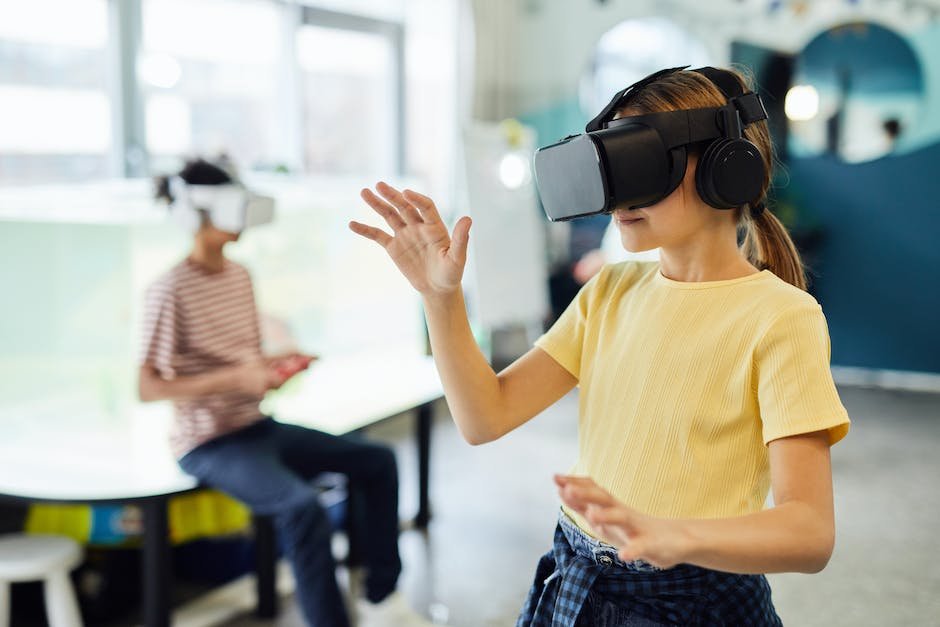Amidst a rapidly evolving digital landscape, the fourth version of OpenAI’s Generative Pretrained Transformer (GPT-4) stands at the forefront of Artificial Intelligence’s incursion into the world of education. We see this intelligent system paving the way for a new era of learning and teaching, enhancing student-teacher interaction, and revolutionizing evaluation methods. As we delve into our exploration of GPT-4’s application in a classroom setting, we’ll shed light on how it supports personalization and accommodates diverse learning styles and comprehension levels. Moreover, we will also take a critical look at GPT-4 technology’s evolution, focusing on its strengths, weaknesses, and the potential it holds to improve several aspects of education, such as curriculum development, feedback mechanisms, personalized learning, and remote education.
Bringing GPT-4 into the Classroom
In the fascinating realm of artificial intelligence, one name is standing tall among its peers: GPT-4 (Generative Pretrained Transformer 4), a model that is reshaping the educational environment in unimaginably creative ways. Promising to straddle the bridge between machine and human cognition, GPT-4 offers exciting possibilities for learning, teaching, and knowledge engagement. This article aims to elucidate the ramifications of GPT-4 on modern pedagogical practices and its potential to revolutionize our understanding of teaching and learning.
Artificial intelligence, particularly the utilization of machine learning models, is not new in education. They have been employed in tutoring systems, adaptive learning, and auto-grading, but GPT-4 takes it a step further. Its remarkable capabilities allow it to produce coherent, contextually-appropriate texts that mimic human-like writing.
GPT-4’s game-changing feature is that it can accurately comprehend and generate responses based on a given input. This feature has revolutionized the learning experience by paving the way for robust, interactive AI-based educational platforms that provide personalized assistance. Whether it’s elucidating complex scientific theories or assisting with arithmetic problems, GPT-4’s flexibility caters to a plethora of learning needs.
The algorithm’s strength rests in its capacity to consume vast amounts of text and synthesize these into correct and contextually-rich responses. It learns from and understands semantics, enabling it to produce relevant insights, nudging learners towards a deeper grasp of the subject matter. Such advanced cognition is a powerful tool, capable of fostering an environment conducive to active knowledge absorption.
From the perspective of the educator, GPT-4 serves as a potent ally. The model’s adeptness at crafting well-written, informative material can assist educators in developing comprehensive lesson plans, reading materials, and assessment tools. The algorithm can also evaluate student responses to assignments and provide constructive feedback, thus streamlining the grading process.
In terms of equity in education, GPT-4 presents a beacon of hope. Imagine a world where personalized, quality education isn’t restricted by geography, economic status, or even language. GPT-4’s language translation capabilities open doors to multilingual education, reaching students regardless of linguistic background.
However, while acknowledging GPT-4’s potential, discussions around its potential drawbacks cannot be ignored. Concerns around data privacy, potential biases in algorithms and student dependency on AI are issues that require deliberation and solutions.
Undoubtedly, GPT-4’s powerful tools present an unparalleled opportunity for education development. A cognitive and fluent AI like GPT-4 can augment and personalize learning, equip educators with potent tools, and democratize education globally. It is a testament to how human-machine collaboration can seek to enhance our pedagogical landscape. However, the journey towards a harmonious integration of AI in education must be navigated consciously, considering ethical aspects and maintaining the irreplaceable value of human teachers.
As with any tool, the value of GPT-4 will ultimately depend on how it is wielded. It is poised to take learning to new dimensions if used judiciously, ethically, and creatively, redefining what it means to teach and learn in the 21st century.

Analyzing the Potential of GPT-4
Delving deeper into the potentials of Generative Pretrained Transformer 4 (GPT-4), one explicitly noteworthy point lies in student engagement and empowerment. Utilizing GPT-4 could revolutionize the way students interact with information and engage in their learning process, thus significantly encouraging the growth of independent learners, adept problem solvers, and critical thinkers.
A prime illustration of such an impact is through the use of GPT-4 to harness a tutoring system capable of providing real-time, personalized feedback to learners, paying careful attention to each student’s unique learning style. The vast narrative-generation capacity of GPT-4 allows it to communicate complex concepts in a simplified and comprehensible manner, thereby facilitating better retention and application of knowledge.
Another considerable prospect of GPT-4 can be presented in the form of smart content creation and curation. The algorithm can break down textbooks into digestible study guides, create dynamic flashcards, summarize lectures, or implement interactive modules that transform passive learning into interactive experiences. This can significantly enhance the learning journey, making it all the more engaging and low-stress for the students.
Despite its many merits, some may argue, with valid concerns, the impact GPT-4’s advent might have on the role of human educators. While technology has progressively penetrated various industries, the sector of education has always necessitated the human touch. However, rather than eliminating the necessity for educators, GPT-4 is more apt to act as an ally, an avenue though which teachers can enrich their teaching methods and reach students more effectively.
One of the more unprecedented frontiers opened up by GPT-4 revolves around the possibility of psychosocial support. By analyzing student responses, emotions, stress levels, or overall moods, GPT-4 can potentially develop a profile for each learner, thereby enabling the provision of tailored emotional support. Although no AI can or should replace professional mental health services, the early-stage detection and mitigation of anxieties and stress can greatly benefit a student’s learning journey.
In the realm of computational thinking, GPT-4 plays a transformative role. The algorithm can introduce and guide students through the concepts of coding, machine learning, and data sciences. Familiarizing students with these burgeoning domains from an early age can prepare them for potential future occupations that may necessitate such skill sets.
The potentials of GPT-4 in revolutionizing education are vast, indeed. However, it remains fundamental to approach the development, deployment, and usage of such revolutionary technologies with careful consideration. The ethical implications, data security issues, and the potential risk of overdependency on AI should all be factored into any implementation strategies. Nonetheless, the acute ability of GPT-4 to personalize, engage, and amplify learning cannot be discounted or ignored. As an invaluable tool, it promises a future where education is not merely an institution but an experience resonating beyond geographical, societal, and linguistic barriers.

Photo by element5digital on Unsplash
GPT-4 and Ethical, Privacy Concerns
Perhaps one of the most deeply felt concerns in the implementation of GPT-4 in education lies in the realm of ethical nuances and privacy issues.
As a tool potent enough to rearrange learning paradigms, the sense of responsibility attached to GPT-4’s usage must match its capacity for impact.
Deeply embedded in GPT-4’s configuration are predictive models that analyze textual information to curate responses.
This inherently raises eyebrows in matters related to student data protection.
Ethically, it flirts with a boundary that separates teaching from surveillance.
Although the objective remains to equip students with personalized learning solutions, the process poses a risk of infringing upon the principle of educational confidentiality.
Data protection regulations, such as the General Data Protection Regulation (GDPR) in the European Union and the Family Educational Rights and Privacy Act (FERPA) in the United States, have stringent rules for data collection and processing, especially for minors.
The integration of GPT-4, with its voracious consumption and synthesis of text, leads to ethical quagmires due to the quantities of data it can potentially collect from a student during learning interactions.
Furthermore, the matter of consent becomes a core concern.
For instance, is it ethically sound to allow a minor, despite informed consent, to share data that can directly influence and potentially manipulate their learning trajectory?
This dilemma further squeezes educators into a tight corner, where the options are to either embrace a promising yet ethically complex tool or to stick to traditional, less risky methods.
The prospect of machine bias is another ethical landmine.
GPT-4’s learning model is only as good as the data it is fed.
Consequently, any bias in the data, whether related to race, gender, or socioeconomic class, could potentially be mirrored in the AI model.
This could inadvertently reinforce stereotypes and bias, leading to a skewed educational experience.
Last but not least, a severe dependency on GPT-4 for education may create a new form of digital divide.
As much as we would like to believe in the democratizing power of AI, access to these technologies is often limited by financial, geographic, or infrastructural constraints.
This divide may further perpetuate educational inequality rather than ameliorate it.
Without a doubt, the transformative power of GPT-4 in education cannot be overstated.
However, as we tread new ground, it is crucial that the focus does not waver from maintaining the sanctity of the educational experience, protecting student rights, and strengthening fairness and equity in the dawn of this AI era.
The exhilarating journey of AI in education still has many bridges to cross before it can ensure a safe, inclusive, and ethical learning environment for all.

Future of GPT-4 Usage in Education
Peering into the future of GPT-4 integration in education, there’s a cluster of fascinating prospects. As recent advances in GPT-4’s self-learning ability and adaptability become more apparent, it is believed that GPT-4 could be instrumental in facilitating self-paced, customized educational experiences, propelling learners into realms of subject matter previously considered inaccessible or challenging.
Concepts of authentic learning and project-based education, long pursued by progressive pedagogues, could be greatly augmented by GPT-4. Its ability to curate and present real-world data-dense information in a digestible, context-specific format could provide learners a robust and immersive learning environment. At the same time, the technology can expertly navigate the increasingly complex digital information landscape, freeing educators to focus on cultivating their students’ critical thinking and problem-solving skills.
Amidst this, there is also the exciting potential for GPT-4 to foster socio-emotional learning. It’s capability to analyze text and recognize elements of sentiment and emotion might enable it to provide supportive responses, recognizing distress or confusion, and maneuvering to resolve it. While it’s undeniable that AI technology can never replace the human touch, GPT-4 could provide a supplementary pillar of psychosocial support in the educational setting.
Yet, a balance must be struck to ensure that the potential boon of GPT-4 does not become a bane. Despite its sophisticated programming, GPT-4 is not foolproof. The potential for misinformation and over-simplification of complex concepts remain valid concerns. Inadvertent biases embedded in its programming could skew perspectives.
Furthermore, the dependence on technology might stifle learners’ self-driven research abilities, setting a dangerous precedence for over-reliance on AI. Consequently, a cautious, supervised introduction of GPT-4 in classrooms becomes all the more crucial. Students ought to be guided on the prudent and appropriate use of GPT-4, bolstering a responsible digital learning environment.
Undoubtedly, further exploration of advanced AI technology in the educational realm is inescapable. As educators and innovators grapple with the ongoing digital revolution in education, the question isn’t so much whether GPT-4 will be adopted, but rather how it will be responsibly harnessed to nurture empowered, responsibility-laden digital citizens of the 21st century. This balance between harnessing the bounty of AI while preserving the sanctums of education is the truest test of GPT-4’s journey towards enhancing education.

Despite the complexities and challenges encompassed in AI integration in education, the potential benefits GPT-4 holds can’t be sidelined. Foreseeing a future where AI-enabled education is the norm, it’s imperative to align technological advancements with ethical cybersecurity principles, ensuring unbiased, secure, and empowering learning environments. Trends and innovations tied to the evolution of GPT-4 and its adoption in education are continually under exploration and assessment. Hence, a judicious and informed approach would be necessary for leveraging the significant advantages while mitigating the risks associated with AI-driven teaching and learning.



